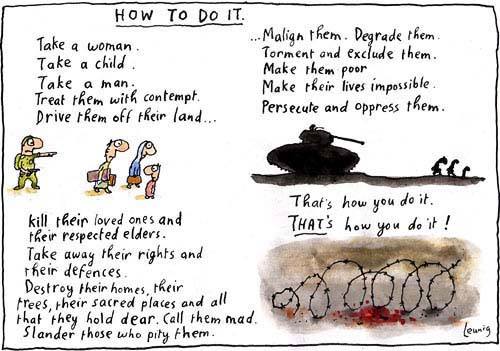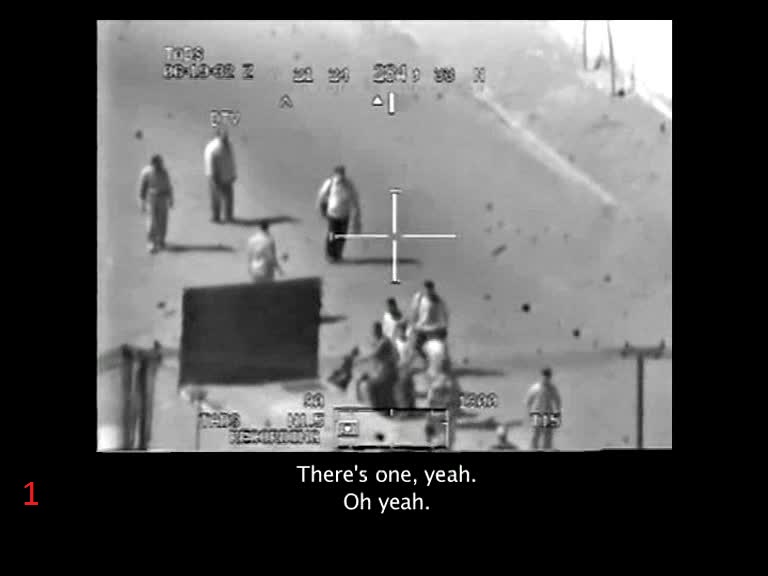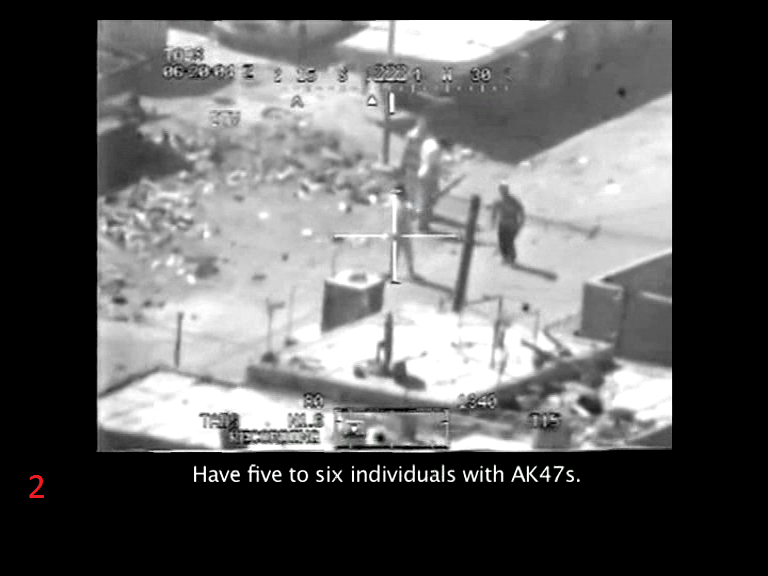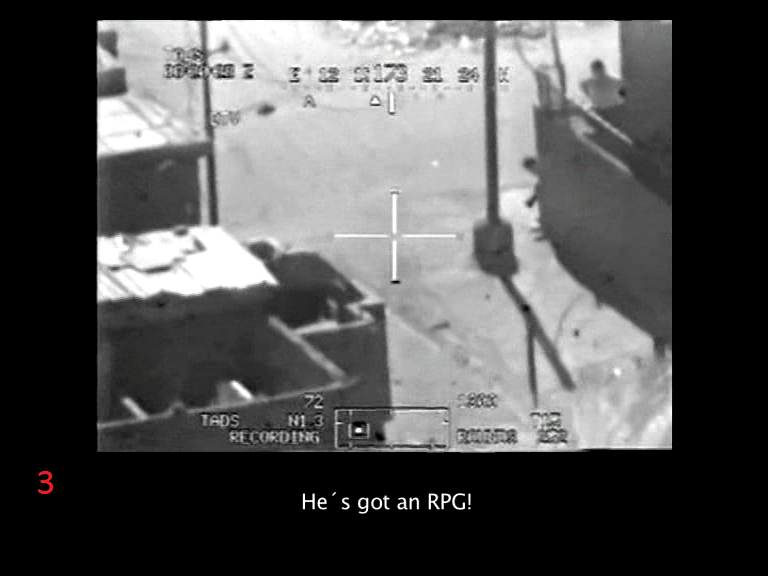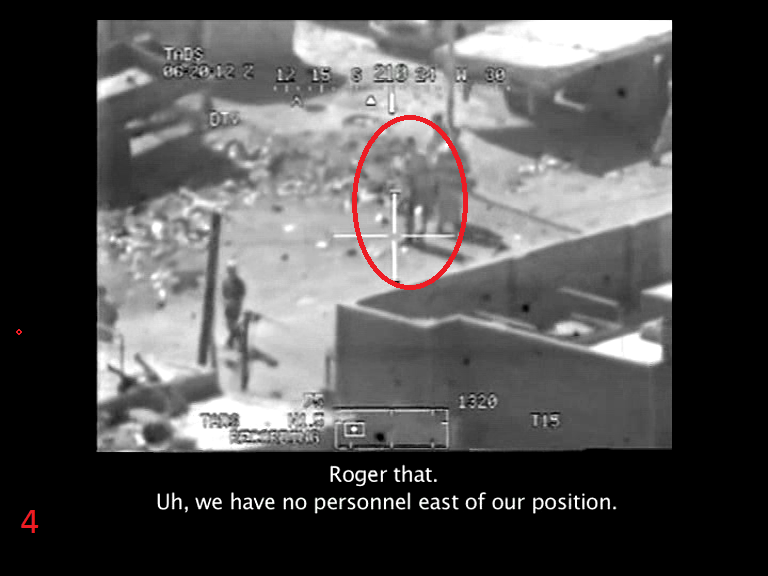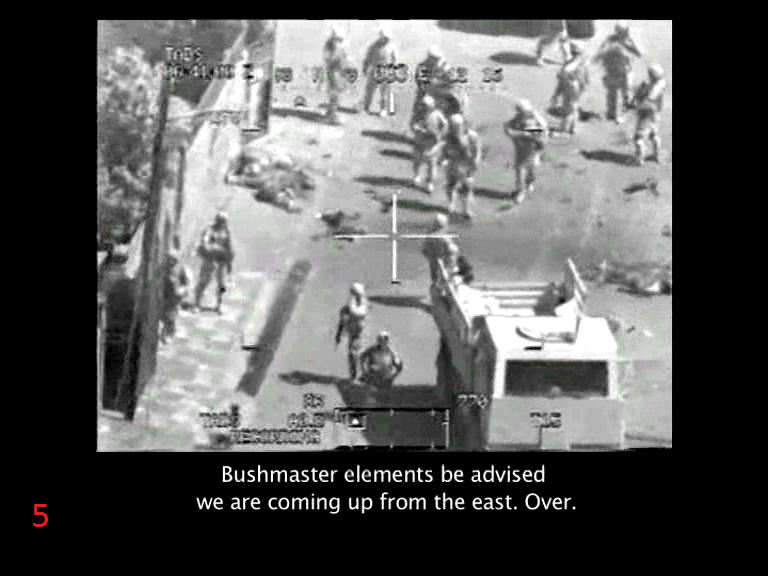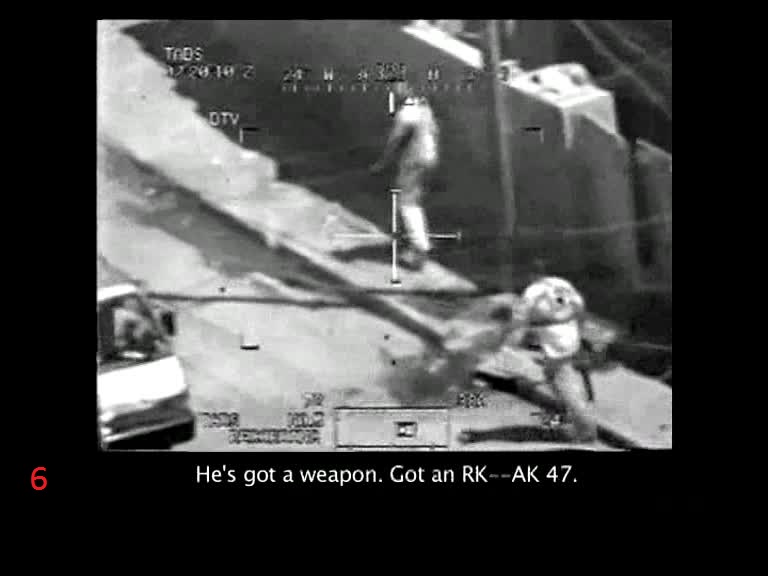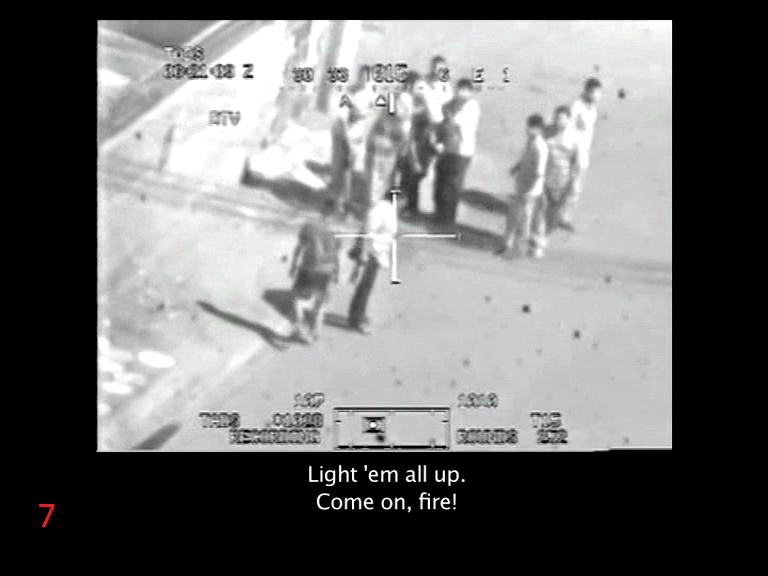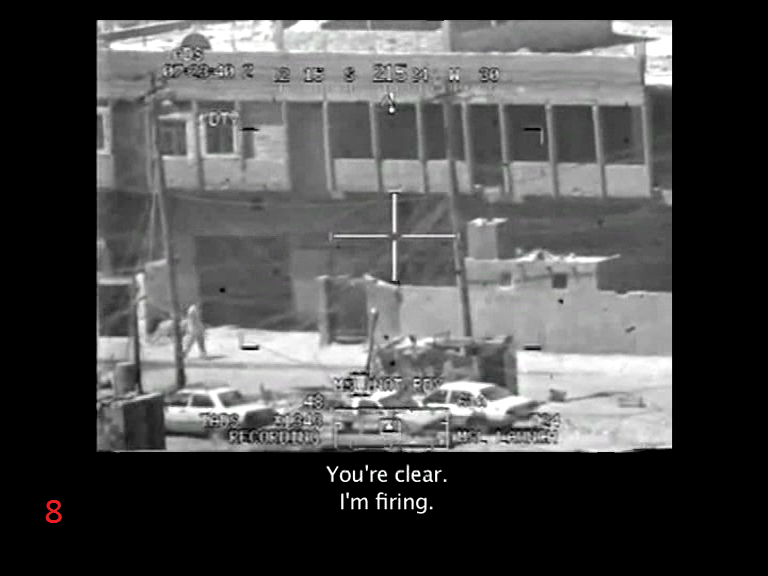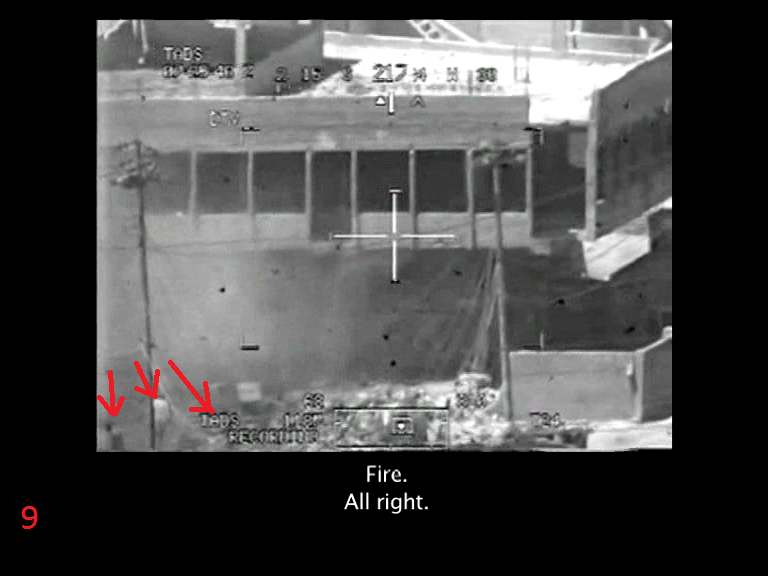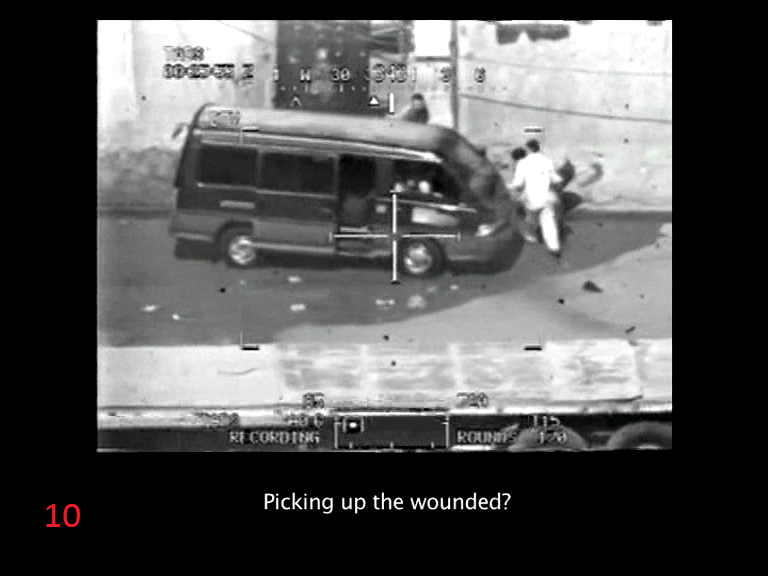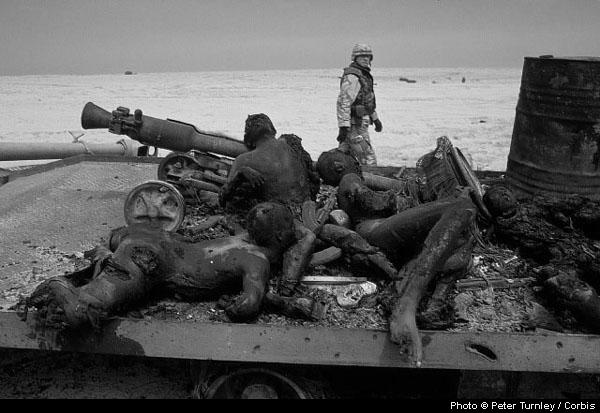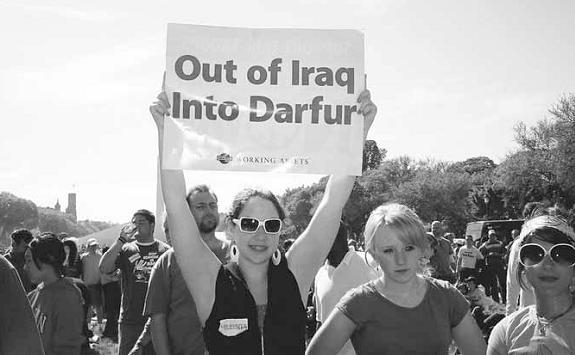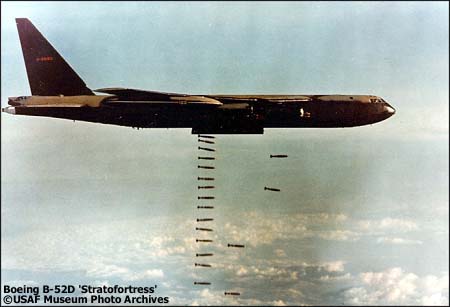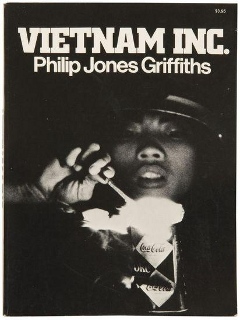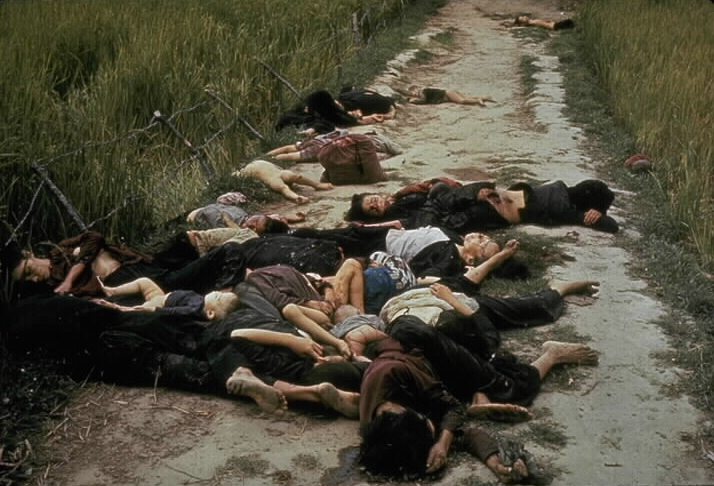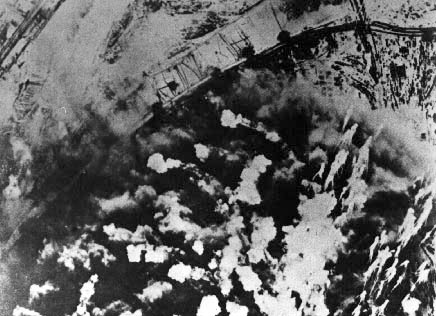
What is happening in Gaza currently is genocide. The power of the word is not because of its power to shock, but because of its accuracy. Now that the word is out of the bag, now that it has gained currency, we cannot allow it to be put back. Establishment voices have long since twisted the usage of the term genocide to serve power rather than justice and peace. If activists do not educate themselves they will find any mention of genocide turned against them as evidence of hyperbole, bias, and (of course) anti-Semitism.
Most genocide scholars seem to understand that Israel is perpetrating genocide against Palestinians, but as Rashed, Short and Docker wrote on the subject in the journal Holy Land Studies (2014, Vol. 13): “Genocide Studies knows it is being watched and can be threatened with vilification at any moment, even in a preemptive gratuitous way.” The result is that those few who do speak out are are represented as being in the minority, when they are allowed to speak out at all. In contrast the highly partisan scholars who deny genocide are regularly presented as the authorities on the subject. Such “experts” are very effective in sounding plausible to the public and to journalists when they are not. They play on people’s expectations and the public’s sense that responsible governmental and non-governmental bodies are constrained by truth and reason.
Once we grasp that what is happening is genocide much of the commentary will be revealed as sickening theatre that clings to a fantasy world where killing civilians is a tragic miscalculation. Seth Moulton, for example, has enough enough self-importance to lecture the Israelis that they are in a “counterinsurgency” and they need an “end-game” and that (according to the revolutionary insight that he shares with Stanley McChrystal) killing civilians will actually make enemies. He even went on Al Jazeera to remind Israel that it should remember the need to win the “hearts and minds” of Gazans. This was on 11 November, after a month of slaughter, and he is worried that Israel might not be winning “hearts and minds” in Gaza! What world is he living in? The same can be said, and has been said, for Piers Morgan demanding that Israel must do more for the patients in Al Shifa hospital.
We are in a war for history, fighting so that truth overcomes power. As George Orwell famously pointed out, the war for the past is the war for the future. What is happening in Gaza is very similar to what happened in 2004 during the Second Battle of Fallujah. That horror has been turned into a videogame where, in some sort of sick revisionism, players are meant to minimise civilians casualties while killing the Iraqi “bad guys”. Meanwhile wikipedia will tell you that there were few civilians in Fallujah (source: the US military) and that at most 800 civilians were killed, despite much eyewitness evidence of a higher level of civilian death.
Unlike Fallujah, where media were vigorously excluded, the world can see what is occurring in Gaza. Yet our collective memory is very short. As the outspoken Irish MEP Clare Daly has said: “…after they’re done the lies are exposed, but there’s never any reckoning.” She is talking of a reckoning for Israel, but those who support them internationally also face no reckoning and pay no price. That must change but unless we can name the genocide and get people to understand what that means, the dead we see before our eyes each day will be written out of the history books and the memory will fade to nothing. The genocide will be framed as a reaction to terrorism aimed only at destroying the violent threat posed by Hamas. We will debate the “errors” and “miscalculations” that led Israel to “indiscriminately” kill civilians in their understandably over-zealous efforts to wipe Hamas off the map. Some will say they were entirely justified, but “critics” will say they were in fact very naughty because they should have been more careful in their otherwise righteous attempt attempt to destroy Hamas. The single word “genocide” can change all of that.
Ideas are important. During the late 1960s, as people became ever more informed about what the US was doing in Viet Nam, official pronouncements began to ring hollow and then started to seem increasingly deranged. Politicians, generals and most journalists became trapped in the network of lies that allowed them to mischaracterise their violent aggression as a morally valid battle against “internal aggression”. The facts became more widely known because activists used various demonstrations and teach-ins to bypass the mostly hopeless print and broadcast media. As knowledge grew, the people clinging to the lies started to seem buffoonish, and that was a major step towards undermining the US ability to maintain its perpetual war.
The Idea of Genocide
Genocide may be among the most important concepts to come out of the 20th century, but it is hobbled by misuse, abuse, and most of all by biased denial. It has become incredibly hard to tell people what the word means because it has been highly distorted by both bad actors and well-meaning fools. It is also so emotive that it is normal to have incredibly strong convictions about what is and is not genocide while having no ability to define the term at all.
I would like to ask the reader to forget received wisdom and focus on the following facts about genocide. The first is that the man who invented the term, Raphäel Lemkin, defined it as being war conducted against people in contrast to war conducted against rulers and their military forces. The second is that Lemkin was always clear that genocide did not necessarily mean physical extermination. The third is that it is a process. It is “a coordinated plan of different actions” that share an aim. “Aim” is the word chosen by Lemkin originally, but “intent” is the common word used today. As I will elaborate later “aim” and “intent” are not the same as “purpose” and “motive”.
As a process, genocide is therefore not found in a single act, nor can it meaningfully be talked about as such. There is no such thing as “attempted genocide”. Nor is genocide a matter of degree. Something does not become genocide because it crosses an arbitrary red line. The commentariat can argue about whether violence has “risen to the level of genocide” but they are talking utter crap. Genocide occurs when numerous acts, which may or may not be crimes in themselves, are concerted to cause destruction of a people “in whole or in part” by inflicting physical or mental harm on a people including the erasure of identity.
Genocide is policy, albeit unwritten policy. Our habit of viewing this vast process as being a criminal “act” is wilful ignorance. Nothing could better illustrate that point than an Al Jazeera English panel discussion on the genocide in Gaza wherein their specialist genocide pundit refused to use the term for the most extraordinary reasons. Geoffrey Nice, the head prosecutor in the genocide case against Slobodan Milosovic, and thus the “expert” on theAl Jazeerapanel, was the only guest to demur at calling the genocide for what it is. He stated that genocide only exists when a perpetrator has a certain “state of mind”. He implied that you can’t name something genocide until a perpetrator has been convicted of the crime.
To put things into perspective, millions of people around the world are involved in actions that are necessary parts of the current slaughter in Gaza. As I will show there is clear evidence that there are co-ordinated actions with genocidal intent. The nature of the actions show this to be true. According Geoffrey Nice, the barrister and putative legal expert on genocide, he won’t use the term genocide because it has to be established that a criminal defendant had a genocidal “state of mind”. This would mean that he and other official types fully intend to deny genocide until the unlikely event that years later one or more individuals is tried and someone like him manages to convince a panel of judges that they can prove beyond reasonable doubt what a defendant’s state of mind was some years before.
Of course, one does not need a criminal conviction to conclude that Rwandans, Sudanese, Iraqis or Serbs are guilty of genocide. Mostly you just need a colour chart (though the US State Department will let you know when skin tone is not diagnostically sufficient).
Geoffrey Nice shows his true face when he uses some some tricky and improper language. He uses the term “wish” when the term “intend” is correct, and when he should say that actions are taken against people because of their identity, he inserts the word “simply”, emphasising the word with noticeable emotion. By saying “wishes to” and “simply because” he implies that “special intent” must come from special animus. This creates the impression that genocide is something undertaken by those we see as the Other: our enemies, the irrational demons that our leaders and politicians have already decried as being hateful monsters. In contrast, people like Henry Kissinger cannot commit genocide no matter how many people they cause to be killed because Kissinger doesn’t hate the people he kills. Mr Nice and his ilk could never use their courtroom telepathy to read genocidal intent his “state of mind” because they have twisted the meaning of “intent” to incorporate a motive of irrational hatred. But this portrayal of genocide as the product of slavering unthinking hatred stands in stark contrast with Lemkin’s notion of a calculated, complex, cold-blooded bureaucratic process.
In Eichmann in Jerusalem Hannah Arendt shows that genocidal violence on an industrial scale could occur at the hands of people who harbour no special hatred for their victims. Some have claimed that Arendt mischaracterised Eichmann, but the more general point has proved robust (in contrast with Daniel Goldhagen’s contrary thesis in Hitler’s Willing Executioners which is vigorously denounced by historians). Genocidal intent does not need to be demonstrated by the rhetoric of hate and extermination because neither is a precondition of genocide.
Different Israelis will have different and multiple reasons for participating in the genocidal violence and oppression that is visited on Palestinians. I do not think it would be over-generous to the Israeli people to say that the predominant motive is a quest for security. They claim that what they do is in self-defence. If we accord them the generous concession that we believe that they believe they are acting in self-defence, it does not mean that they are not committing genocide, nor even that they are not harbouring a racist hatred of Palestinians. If I said “I am not a racist, I am just scared of black men” you would be correct in telling me that I am actually a racist. Israelis who think that they are threatened by Palestinians as such being given by full sovereignty or full democratic rights are racist and genocidal. It is not that there may be no threat, but that they think with a double-standard that displaces all of the onus onto Palestinians without recognising any Palestinian right to establish relations that mitigate threats to their own collective.
There are also Israelis on the right, including hundreds of thousands of illegal settlers, for whom the genocide serves an overt expansionist plan of a “greater Israel” (as seen in Likud’s original party platform from 1977 which states “between the Sea and the Jordan there will only be Israeli sovereignty”). Most Israelis, though, simply believe that you cannot make peace with Palestinians unless you asserted total dominance over them. Arguably the second stance is more racist than the first, but both of them lead to the exact same genocidal policies. Two distinct motives leading to the same policy of genocide. Motive and intent are not the same thing.
Israelis have had a massive military advantage over Palestinians since before Israel even existed. Palestinians suffer due to this, far more than Israelis suffer. The racist claim is that Palestinians are too irrational and/or deceitful to make peace. Israel’s military occupation of the West Bank and Gaza displaces almost all of the risk and violence upon the Palestinian people with Israel operating security forces in the West Bank and blockading Gaza. Israelis are a rich people not allowing a poor people any autonomy because that would increase the power of Palestinians to oppose Israeli power. Not coincidentally the policy to suppress Palestinian power under a rationale of defence happens to allow illegal settlements to flourish in the West Bank. Whether the motive is defensive or expansionist hardly matters to the genocidal nature of the actions. Attempting to defend yourself by reducing another people to a point of inescapable weakness is a classically genocidal move that will inevitably lead to a logic of extermination because an oppressed people will always have some means to resist while they remain alive.
When Israel claims to be acting in “self-defence” we should know that this means attacking the people of Palestine as such – imprisoning, immiserating and killing them because it is their very identity, their cohesion and their bodies that Israel considers a threat. Taking this logic to its conclusion they will never consider themselves secure from threats until no Palestinians exist. The logic behind Israel’s actions is the logic of genocide. In the words of John Docker, genocide is a “composite and manifold” process. It does not begin nor end with periods of heightened mass violence such as Gaza is suffering at the time of writing this. The genocide began in 1947, but the current massacre can only truly be understood as part of that long tortuous generational crime.
“Debasing the Coin”: The Tendentious Policing of the Word “Genocide”
“Genocide” is clearly one of the most misused words in the English language. This is not because it is overused, if anything it is more often underused. The problem is that people treat genocide as if the word were defined by some level of atrocity. Even supposedly serious genocide scholars embrace undefined subjective standards then accuse those who disagree of acting to “debase the coin” of the hallowed word. They want to police the usage of the term so that it fits an ideological notion of savagery and hatred. This tends to prejudicially exonerate richer, whiter countries who kill more clinically and from higher altitude while using better platitudes.
It is easy to understand the evasions and distortions used on the term “genocide” by analogy with the word “rape”. “Rape” is legally defined as a crime using the concept of consent. For decades, however, people have struggled to assert that rape is a matter of consent in the face of those who believe that “real rape” is when a stranger uses overt violence in an act that is either a form of abduction or burglary. Rape that happened outside of these circumstances has historically been downplayed, dismissed or ignored entirely. I could argue here very serious trauma can occur without someone beating a victim or holding a knife to their throat, but that is not the point. Comparing trauma and damage is an invidious trap that only serves to wrongly diminish, if not erase, a crime. The crime of rape cannot be denied by setting a minimum level of trauma or type of coercion because it is about consent.
Rape is rape is rape. Genocide is genocide is genocide. A genocide does not need to be compared or related to Holocaust to judge if it is worthy of the name. In fact, when Raphäel Lemkin coined the term he mostly eschewed reference to the ongoing extermination of European Jewry, of which he was well aware. Why? Because extermination or attempted extermination is a concept that does not need special elaboration and insight. Despite the fact that the word he invented – “genocide” – sounds as if it references immediate killing of a genos, it is a far broader term that encompasses violent extermination in a strategic spectrum.
In the very first paragraph on the subject of genocide Lemkin wrote:
Generally speaking, genocide does not necessarily mean the immediate destruction of a nation, except when accomplished by mass killings of all members of a nation. It is intended rather to signify a coordinated plan of different actions aiming at the destruction of essential foundations of the life of national groups, with the aim of annihilating the groups themselves. The objectives of such a plan would be disintegration of the political and social institutions, of culture, language, national feelings, religion, and the economic existence of national groups, and the destruction of the personal security, liberty, health, dignity, and even the lives of the individuals belonging to such groups.
In describing genocide Lemkin, a Polish Jew, cited German occupation policies in many nations targeting many ethnic groups, referring most often not to Jews but to other ethnicities, particularly Poles. Lemkin had long been concerned with both the physical killing of ethnic groups and the destruction of their cultural and social cohesion. He attempted in 1933 to create two international crimes: “barbarism” which entailed mass violence against ethnic groups; and “vandalism” which entail attacks on “works of cultural or artistic heritage”. In simple terms the word “genocide” came from the final crystallisation of his sense that these are not separate phenomena and are part of a wider practice of which direct violence is only a component. Lemkin’s first published discussion of genocide was a very short chapter in a large book. Lemkin cast his net wide, suggesting some form of genocide for many different nations ranging from the “Germanisation” of those considered racial cousins, to the mass killing of Poles, Russians and Jews.
There may be no more important thing to note about the concept of genocide than the fact that had Lemkin chosen to focus his attention on the genocide of Jews, to be consistent he would have begun his accounting of genocide no later than Hitler’s assumption of the Chancellorship of Germany. Some scholars have actually criticised this aspect of Lemkin’s conception because it means that non-lethal acts of discrimination such as firing Jewish civil servants and academics were acts of genocide. Once again they feel that this “debases the coin”. But Lemkin’s unadulterated version of genocide is the only way in which the term can be used to save lives. Understanding that a genocide is occurring means that people can rise up to stop the acts before they progress to the stage of mass killing. Isn’t that more important than waiting until the killing is over then putting someone in prison?
Genocide is thus such a broad and sensitive concept that the terms that have been invented to avoid using the g-word are redundant and ridiculous. Words like “ethnocide”, “sociocide” and “culturecide” largely serve the bad-faith purpose of concealing genocide. People are often more comfortable using “Apartheid” or “ethnic cleansing” because these words are considered more reasonable and measured, but our only criterion should be accuracy. The habit of politesse has predictably that favoured the most powerful while scruples about accusing members of the developing world of genocide have equally predictably been eroded to mere pretension.
This selective usage of the word genocide creates strange illogic. For example, how is a state is meant to ethnically “cleanse” land while not committing genocide? Bear in mind that Lemkin specifically wrote that one possible aim of genocide was the imposition of the “national pattern” on “the territory alone, after removal of the population and the colonization by the oppressor’s own nationals.” It would seem that “ethnic cleansing” is a very straightforward manner to achieve this genocidal outcome. Forced transmigration is not specifically prohibited under the United Nations Convention on the Prevention and Punishment of the Crime of Genocide (UNCPPG), but it doesn’t need to be. There is no practical way of ethnically cleansing people from an area without committing acts prohibited as constitutive of genocide and if your aim is to remove a protected category of person from an area entirely then that is clear genocidal intent.
To illustrate, let us examine the words of another vaunted “expert” Omer Bartov who expounded his reckons on the link between ethnic cleansing and genocide during a Democracy Now! interview: “there is a connection between the two, because often ethnic cleansing becomes genocide. That happened, in fact, in the Armenian genocide in World War I….” I can not for the life of me understand what he thinks happened. Does he believe that Armenians were just delivered eviction letters and told that the government would like them to march into the wilderness at their first possible convenience and the Armenians went in quiet obedience without any violence being visited on them? Does he think that forcing them to leave their homes was not “causing serious bodily or mental harm to members of the group” and “deliberately inflicting on the group conditions of life calculated to bring about its physical destruction in whole or in part”? Does he think that the Trail of Tears was not genocidal?
One reason for Bartov’s weird attitude may be that he was almost certainly brought up (in Israel) to believe that Palestinians had conveniently ethnically cleansed themselves at the perfect time to allow Israel to declare itself a state. Israel concocted a lie – a lie still repeated by Israelis and pro-Israel leaders and journalists – that Palestinians responded to a call from Arab allies and decided to leave just at the right time for Jewish majority state to be created where such a thing had previously been impossible. Jews made up less than one-third of the population of Palestine and would have been a minority in any conceivable geographical partition. We have now known for decades that there was a co-ordinated plan to empty “Arab” population centres for reasons of “self-defence”. I won’t detail the infamous Plan Dalet and the controversies that surround its intent, but suffice it to say during its implementation there was widespread violence including a number of massacres. Palestinians fled as intended. Israel managed to create a Jewish majority state that encompassed 78% of Palestine. Israel immediate acted to ensure that none of the refugees could return under the grotesque rationale that by fleeing they had given up their rights of residence and citizenship. This is despite the fact that Israel’s recognition by the UN was contingent on compliance with UNGA resolution 194 which ordered that Palestinian refugees be allowed to return immediately. Then Israel systematically lied so that Israeli children, like Bartov, were raised to believe in the immaculate self-cleansing of 700,000 Palestinians.
Ethnic cleansing is a useful concept, but it cannot occur outside of the concept of genocide. It is not a lesser crime against humanity in some unwritten hierarchy of badness. It is an act of genocide which accompanies other acts including the inevitable acts of violence that must occur to facilitate ethnic cleansing.
Genocide is a concept that could allow us to see and stop the ongoing violence of the powerful against the powerless, but only if the word is reclaimed and used with rigour. This has to come from the grassroots. People with status and those deemed to be experts are far too compromised. Those selected as what passes now as public intellectuals are usually those whose words appeal to one or more billionaires. Nowadays the problem is more one of amplification and algorithms than one of gatekeepers, but the answer is the same as it was in the 1960s. Activists must engage in their own education, creating intellectual constituencies for voices that serve truth and justice rather than money and power.
In the mean time the genocide experts and campaigners that most people will see are all servants of the status quo, however much crocodilian sentimentality they display. They want to “punish” the crime of genocide, which means sending old men to the Hague when of necessity the defendants have long since lost their ability to harm others. Then without proof or any attempt at self-interrogation they claim that locking up these old men helps prevent other genocides. They want to prevent the “real genocides” which are like the “real rapes” – i.e. those committed by political enemies, the poor, and the non-white. The US, meanwhile, is the suit-wearing serial rapist of this analogy whose victims are at best ignored if not punished and persecuted for the act of naming the crime committed against them. Israel is the kid brother who needs big brother to bail him out, but shares almost the same level of impunity.
It is time for an international movement to end the ability of states to openly commit genocide without fear that it will be named. At the moment it is comparatively easy to condemn Israel’s genocide because many top officials loudly proclaim their genocidal intent with regards to the current massacre in Gaza. What we have to ask is if we think it is acceptable that the same acts would not be considered genocide if the Israelis exercised greater control over such communications. Do we as activists think it is wise to allow the perpetrators of a crime to be able to control whether the world believes the crime is taking place? Because that is the current situation and if we rely on Israelis to keep announcing their genocidal intent we will find that the well will run dry very quickly.
Genocidal Intent
Intentionality is an important part of the notion of the crime of genocide. In the crime of genocide it is not the individual acts that make the crime but the genocidal intent behind those acts. This is known as dolus specialis or “special intent”, however, this phrase is tendentious and prejudicial. We should use the term “genocidal intent” because “special intent” has inescapable connotations of exceptionality, if not rarity, that are sadly unjustified when it comes to genocide. It is also over-emphasised and almost mystified as something unique to genocide. Intent is also highly relevant to the criminality of other acts. I could knock someone else’s property into my open bag with intent to steal or without intent to steal. It may not be possible to determine criminality by the act alone. In many jurisdictions a mens rea (Latin for guilty mind) or niyaa (Arabic for intention) is crucially important and often necessary for an act to be considered criminal at all, regardless of the consequences of the act.
There is a notion that “special intent” is to be found in the words of the perpetrators of genocide rather than their actions. This is untenable, if not unserious, for many reasons. Genocide scholar Raz Segal referred in the very early stages of the onslaught on Gaza to a “textbook case of genocide”. Obviously this is a brave and welcome stance, but he has fallen into the trap of emphasising the dramatic genocidal rhetoric of Israeli leaders. Their talk of “flattening” or “erasing” Gaza is hard to ignore, but it is not relevant to whether or not they are committing genocide.
The emphasis on the overt confessions of people committing genocide leaves us in the
unjustifiable position of judging the nature of someone’s actions on the basis of whether or not they choose to incriminate themselves. It also leaves the hopeless circumstance of arbitrarily deciding who is and is not sufficiently highly placed, or influential, or practically involved to count as being able to evince genocidal intent when genocide is a collective set of diverse actions. Moreover, the rhetoric cited is without exception exterminatory, not merely genocidal. Remember that this is a rigged game. If an African leader, especially an opponent of Western hegemony, ever used terms like “flatten” or “erase” regarding enemy territory in time of conflict they would undoubtedly be pursued by the ICC until their dying day. In the case of an Israeli leader, though, any exterminatory rhetoric is likely to prove poor evidence of genocidal intent as soon as they are able to point out they did not in fact fully flatten Gaza, and that their plans and actions always fell short of completely erasing the people living in Gaza. The Israelis and their genocidal comrades will simply say that the passion that followed the shock of October 7 led to understandable hyperbole and that no operations ever aimed at enacting such drastic policies. By trying to go beyond the required proof of genocide Raz Segal may find that the “textbook case” is a will-o-the-wisp which will disappear, leaving him enmired in the bog of interminable apologism.
We need to always keep in mind that genocide is a set of actions that share a genocidal intent, not a genocidal purpose. The distinction between intent and purpose is crucial as can be seen in the analogy of murder. If I hate someone so much that I kill them out of loathing that is murder, but equally if I kill them because I want to steal their wallet it is still murder. In fact if I kill a complete stranger simply because they are blocking my view of the sunset and shooting them seemed less bother than asking them to move, it is still murder. I don’t need any particular animus aimed at the victim in order to have murderous intent. That is why “special intent” is such a terrible phrase. It is used to create a false historical narrative of genocides whose archetypes in the Holocaust and the Rwanda genocide are heavily mythologised. All of the complexities and contradictions of these mass events removed to create a simplified arc that begins and ends with bad guys who want to exterminate a people because of an implacable hatred.
Israel has clearly shown a pattern of targeting civilians. This is not “indiscriminate”. They are choosing to target civilians. This is a discriminate choice. They target hospitals and ambulances. This is a war crime under the Geneva Conventions. The IDF even tweeted revealing their deliberate and discriminate choice to attack making the false claim that that they became “legitimate military targets” if Hamas used them (the tweet was soon removed). The IDF has plenty of legal expertise to draw on and those who decide the policies and rules of engagement know that they are committing war crimes. The fact that they choose to do so is not just a crime in itself, it is evidence of genocidal intent. The disparity in military capacity between Hamas and Israel is so vast that any strategic calculation would show that the gains from, say, attacking Al Shifa hospital are vastly outweighed by the massive strategic losses they are sustaining in the international diplomatic world and the world of public opinion.
We have all seen what is happening. More than half of Gaza’s hospitals are effectively condemned by Israel and more than half of its population have been displaced, but neither the displaced persons nor the hospitals in the south are safe from direct violence nor the indirect violence brought about by lack of food, water and fuel. When many people fled south, leaving behind much including food preparation facilities, Israel bombed many bakeries. They have ensured that humanitarian relief is a small fraction of what is needed.
Clearly Israel has breached the UNCPPG under the first three prohibited acts of Article 2: “(a) Killing members of the group; (b) Causing serious bodily or mental harm to members of the
group; (c) Deliberately inflicting on the group conditions of life calculated to bring about its
physical destruction in whole or in part….” The fact that they are doing so in multiple different ways acting in concert towards the same aim is what makes this a “textbook case of genocide”.
The main way to discern genocidal intent is through the fact that multiple different actions by the perpetrator work towards the same outcome. The intent is evident in the actions. It is not tenable to suggest there it is possible to repeatedly contravene the acts prohibited in the UNCPPG without genocidal intent. If you can identify those acts as being inflicted on a protected group as such then that is enough to demonstrate intent. Statistically there is no question that the victims of Israeli direct and indirect acts of violence are overwhelmingly non-combatants, and the discrimination between Palestinians and Jewish citizens of Israel is so stark that I don’t think I need to enumerate it here.
As mentioned, relying on emotional and/or racist outbursts as evidence of genocidal intent is problematic on two counts. Firstly it allows Israel to conceal genocide simply by exerting greater discipline over its officials. Secondly there is an easy defence for Israel in that they can point out that such pronouncements were mere rhetoric and were not incorporated into doctrine, policy, strategy or tactics. Israeli actions are all that are needed to prove genocidal intent, but if we did want to use Israeli statements to prove intent it should be those evince an intent because they proclaim a purpose that cannot be obtained without committing genocide.
Genocidal intent is shown when Israel refuses to define its borders; when it funds, supports, and defends illegal settlements; when it openly talks of aspirations to annex Palestinian territory; and when Netanyahu pointedly displays maps at the UN that exclude the Occupied Palestinian Territories from existence. Genocidal intent is chillingly hinted at in all discussions of the “demographic threat” posed by a growing Palestinian population. As mentioned, no people will cleanse themselves voluntarily from their homes.
To give some perspective I will refer to something I wrote (p. 60) regarding the genocidal intent of Germans during World War II. The point I made was that the “Final Solution” was not documented as such until after it was well under way. They had already begun murdering all of Europe’s Jews, but they had not recorded an explicit intent and had events happened slightly differently might never have done so. Some have claimed that this means that Judeocide was a “bottom-up” process that was begun by widespread anti-Semitism then adopted by the leadership. I counter by pointing out that from the very first draft of the German Eastern strategy, Generalplan Ost, a future was envisioned in which tens of millions of people, including all Jews, would disappear from Eastern Europe. The fact that people seem reluctant to see these plans as evidence of genocidal intent seems quite eccentric to me, but it fits the pattern of ignoring the banal, detached and bureaucratic origins of genocidal thinking in favour of a more dramatic and demonic evidence. Israel is never likely to create a “Final Solution”, but it has its own equivalents of Generalplan Ost.
I am not suggesting here that Israel intends to kill or starve all Palestinians but I will refer back to my earlier point about ethnic cleansing being inherently genocidal. I will also remind readers that at the time writing Israel is killing hundreds of Palestinians every day. Moreover their ongoing siege, their forced displacement, and their attacks and destruction of medical and other essential facilities have already began to take a huge toll. Al Shifa hospital has been losing patients due to lack of generator fuel and other supplies to such an extent that it has had to bury 179 bodies in a mass grave. All of the ICU patients died. Hunger and infectious disease are both on the rise and anyone who has studied genocide or colonial history can tell you that the combination of hunger and disease is by far the greatest killer in times of genocide.
Referencing territorial ambitions also far exceeds what is needed to prove genocidal intent. Maintaining the territorial status quo while deliberately enforcing conditions of life on Palestinians that maintain weakness and poverty clearly involves inflicting “serious bodily or mental harm”. As one article explains:
In early 2006, Dov Weisglass, then a senior advisor to Prime Minister Ehud Olmert, explained that Israeli policy was designed “to put the Palestinians on a diet, but not to make them die of hunger.” In 2012 it was revealed that in early 2008 Israeli authorities drew up a document calculating the minimum caloric intake necessary for Palestinians to avoid malnutrition so Israel could limit the amount of foodstuffs allowed into Gaza without causing outright starvation.
Lemkin pointedly left “mass killing” until last when detailing the ways in which genocide is committed through physical means. Before killing came “Racial Discrimination in Feeding” and “Endangering of Health”.
It is worth reading just how many different forms of discriminatory practice that Lemkin considered to be genocidal. Craig Mokhiber resigned from the UN, citing a “textbook case of genocide” against Palestine. Like Raz Segal I can only applaud the use of the term, but decry the reasoning behind it. Mokhiber says that a “sense of impunity” has caused Israeli officials to say the quiet bits out loud when normally one has to comb “dusty archives” and “secret correspondence to see what they were really up to….” To be fair he does reference discriminatory actions, but he is still suggesting that the genocidal intent is to be found in hateful, vengeful and exterminatory rhetoric. Like Segal he links the “textbook” nature to the extremities of Israeli posturing. In reality, though, the textbook is the UNCPPG and “special” intent is merely “the intent cause destruction in whole or in part”. From that perspective “special intent” is not a really high bar. If we really wanted to know what a “texbook” case looked like we would use the examples set out by Lemkin in Axis Rule in Occupied Europe.
Reading Lemkin gives a very different idea of genocide and genocidal intent than the public is likely to hear from “experts”. Under “Techniques of Genocide” Lemkin lays out a diverse set of policies of destruction. I have already dealt with the “Physical” techniques, but the others are laid out below with illustrative quotes.
“Political” –“…local institutions of self-government were destroyed and a German pattern of administration imposed.”
“Social” – “The social structure of a nation being vital to its national development, the occupant also endeavors to bring about such changes as may weaken the national, spiritual resources.”
“Cultural” – “Not only have national creative activities in the cultural and artistic field been rendered impossible by regimentation, but the population has also been deprived inspiration from the existing cultural and artistic values.”
“Economic” – “The destruction of the foundations of the economic existence of a national group necessarily brings about a crippling of its development, even a retrogression. The lowering of the standards of living creates difficulties in fulfilling cultural-spiritual requirements. Furthermore, a daily fight literally for bread and for physical survival may handicap thinking in both general and national terms.”
“Biological” – “…a policy of depopulation is pursued. Foremost among the methods employed for this purpose is the adoption of measures calculated to decrease the birthrate the national groups of non-related blood, while at the same time steps are taken to encourage the birthrate of the
Volksdeutscheliving in these countries.”
“Religious” – “…through the systematic pillage and destruction of church property and persecution of the clergy, the German occupying authorities have sought to destroy the religious leadership of the Polish nation.”
“Moral” – “In order to weaken the spiritual resistance of the national group, the occupant attempts to create an atmosphere of moral debasement within this group. According to this plan, the mental energy of the group should be concentrated upon base instincts and should be diverted from moral and national thinking.”
It becomes very obvious from Lemkin that destroying a genos “in part” means weakening that genos through such “techniques” or, more properly, through acts proscribed in the UNCPPG. The International Criminal Tribunal for Yugoslavia ruled “the part must be a substantial part of that group. The aim of the Genocide Convention is to prevent the intentional destruction of entire human groups, and the part targeted must be significant enough to have an impact on the group as a whole.” But this is case law for criminal cases brought against individuals. It is highly subjective and makes the presumption that the wording of the UNCPPG is to be ignored in favour of what the court thinks is the unwritten intention behind the convention. It begs numerous practical questions such as what is meant by “entire human groups” and in what timeframe is this meant to occur.
It seems as if the entire case-law of genocide is a gigantic argument from consequences that will only ever serve victor’s justice. As I will show below, moving away from the wording of the UNCPPG as a reflection of Lemkin’s concept of genocide leads to absurdities. Therefore genocidal intent requires no declaration of specific hatred, merely the demonstrated intent to weaken a people through proscribed means. Consistent actions against an identifiable protected group are in themselves evidence of intent as personnel cannot be impelled without such an intent. Moreover, extending full or partial impunity to one’s own people for committing crimes such as assault, theft, abduction, vandalism, rape and murder is essential to genocide. Once legitimate lawful purposes for providing such immunity are ruled out, there is clear genocidal intent.
As it happens Israel has a long documented history of undertaking the sort of acts of destruction that constitute genocide. I do not have the time to provide sources for each, but Israel has killed and imprisoned political and community leaders; it has attacked and vandalised community and arts organisations; it has attacked health providers; it has attacked and harassed worshippers and places of worship; it’s personnel have deliberately damaged places of religious and historical significance such as the Church of the Nativity; it has destroyed archaeological sites, graves and architecture in such a manner as to erase signs of a Palestinian identity from the land. Norman Finklestein’s book Beyond Chutzpah alone contains a litany documented acts by Israel that are clearly constitutive of genocide. The rationale of maintaining a power disparity (i.e. weakening Palestinians as such) is openly avowed. The book came out in 2005, before there even was a siege of Gaza and before the repeated mass violence against Gaza. In 2008-9, 2012, 2014 and 2021 Israel attacked Gaza killing mostly civilians and inflicting great damage on civilian homes, property and infrastructure. Israeli officials sometimes refer to this as “mowing the lawn”.
If we put too much emphasis on the current slaughter and the heightened rhetoric that has accompanied it we risk putting ourselves in a position that effaces the banal genocide of the day-to-day realities of Israel’s occupation and slow ethnic cleansing of East Jerusalem and in the West Bank. This would imply a version of genocide that starts when Israel starts dropping bombs, then stops when there is a ceasefire, but then starts again when bombs fall a few years later.
Genocide Does Not Have an On-off Switch
The orthodox view of genocide has little to to with Lemkin’s original idea. The UNCPPG obliges all states that have ratified the convention to take action. When it came into force in 1951 the US was committing genocide. They killed at least one million Korean civilians with a bombing campaign alone. Political and military leaders used racist and exterminatory rhetoric every bit as overt as that used by Israeli leaders today. It was, by those standards, a “textbook case of genocide”. Yet, as historian Bruce Cumings noted, under the wording of the UN Convention the US was committing genocide while under the auspices of UN Command itself (The Korean War, p 149).
What the US was doing in Korea was horrific and condemnable, and the world might be a much better place if the member states of the UN had acted to stop the slaughter because of its genocidal nature, but it can hardly surprise anyone that it did not. Nor can it be any surprise that governments failed to recognise subsequent US genocides in Laos, Viet Nam, Cambodia, Afghanistan, and Iraq (that is not even to mention the fact that many other US actions including sanctions programmes are clear intentional acts prohibited under the UNCPPG). As things currently stand the Genocide Convention has become a joke. The logic of Lemkin’s notion was smothered in its infancy because it was made into law and states were expected to act against something that was still a common practice of powerful countries.
Expediency has forced the official world to twist and contort the notion of genocide into one that does not so obviously inculpate the US, its allies, and its most powerful rivals. Then the subjective and irrational received version of “genocide” became a useful tool for the powerful to delegitimate leaders or regimes that are obstacles to the exercise of power. It is now also a tool of interstate public diplomacy, wielded in the most brazen cynical manner. The orthodox notion of genocide is encrusted with the dripping filth of realpolitik, but many caught up in the glamour of performative human rights work imbibe this ordure as if it were ambrosia, doing the work of the oppressor while basking in the self-righteous glow of false humanitarianism. Unwittingly, even those who want to use the term “genocide” in more worthy causes are trapped into mirroring the subjective and undefinable usages of the self-serving.
Katherine Gallagher, a senior attorney for the Centre for Constitutional Rights (CCR) which has filed a case against the Biden administration to block their further assistance in the ongoing genocide. By this they clearly mean the current assault on Gaza. In an interview with Democracy Now! Gallagher says the following: “And in recognition of the severity, that this is the crime of crimes, when it requires the specific intent to destroy a group, a national or ethnic group, in whole or in part, that is such a serious crime that states are obligated to take all measures within their control, all measures possible, from the second, from the minute they learn of the possibility of genocide, to stop that.”
Such constructions of “genocide” are full of absurdities. Take the “crime of crimes” assertion. What does it even mean? I could make a robust case that the US sanctions against Iran are genocidal on the basis that they fit the literal terms under which genocide is defined in the UNCPPG. In contrast I could very successfully argue that the Atlantic slave trade was not genocidal because it does not fit the literal terms of the UNCPPG. Should we argue that this is wrong because the Atlantic slave trade caused much greater death and suffering than the Iran sanctions? Or, should we just be fucking grown-ups and realise that words are not toys and that no useful categorical term is ever going to correspond to “a bad thing that I don’t like”.
Perhaps one of the most ridiculous things is the way that the passage of time is ignored. Take the question of intent. What is the shelf-life of an expression of genocidal intent? If Israelis keep doing exactly the same things but stop making racist statements about it, when does it stop being genocide and become a nicer form of killing people? At the other end of the spectrum, how far back can we obtain our “specific intent”. Plenty of early Zionists sounded pretty genocidal. Ze’ev Jabotinsky believed that a Jewish majority could only be established by force, saying that “All natives resist colonists” and comparing Palestinians to Sioux and Aztecs. To be clear “force” means killing members of the group, which is covered in the UNCPPG. The nicer Zionists distanced themselves from his rhetoric, but it didn’t stop them from using force to establish a substantial Jewish majority in 78% of Palestine.
If Jabotinsky is too right-wing or it is objected that he died before Israel existed, then we might look to the infamous words of Golda Meir who said that there was “no such thing as Palestinians”. Her reasoning is based on specious historical assertions, but in terms of genocidal intent it is perhaps the most chilling manner of creating the moralistic space for an intent to destroy a people – to suggest that their existence as a people is already a fiction. Is that not in some ways worse than calling them “animals”?
Likewise the passage of time is ignored when it comes to defining those acts that constitute genocide. Gallagher references the same three prohibited acts from the UNCPPG mentioned above – “…killing, causing serious bodily or mental harm, and creating the conditions of life intended to destroy a population, in whole or in part.” It is very clear from the context that Gallagher and the CCR are referring to recent events in Gaza, but when exactly do they think that Israel has not been “…killing, causing serious bodily or mental harm, and creating the conditions of life intended to destroy a population, in whole or in part”? If both of the latter acts are separate and sufficient in themselves to be considered genocide (as the convention makes completely clear) why is it that genocide is only being talked about now that killing is happening on an industrial scale?
The emphasis on killing also begs the question of what level of killing is sufficiently low for people to consider the genocide to be over. Would it be 10 a day? 1 a day? 1 a week? What is “substantial” enough? And then if they drop below that quota does the genocide start again when they next exceed that quota? Or does that make a new genocide altogether? Israel has repeatedly attacked Gaza. This attack may be worse, but it is not qualitatively different from Operations Cast Lead, Protective Edge or Pillar of Cloud. What conceivable real world criteria would allow someone to say that genocide is happening now, but that it wasn’t happening 3 months ago, or back to 2007, or back to 1967, or back to 1947. No sensible distinction can be made. The occupation is the genocide.
And what of the West Bank? If Israel is committing genocide in Gaza then the group it is committing genocide against is Palestinians as such. Are we supposed to believe then, that they are not committing genocide in the West Bank? If not, why not? Is it a matter of body count? Is it the bombing? What is it that makes one genocide and another not. Israeli military and settler violence is growing on the West Bank, as it was before October 7. Villages are being ethnically cleansed. There is killing. There is mental and physical harm. That is indisputable. People are also subject to conditions of life which are calculated to bring about their destruction in whole or in part. This is in part the confinement, restrictions and deprivations along with property destruction that are justified by the state of Israel as security measures, or it is the theft and destruction by Jewish settlers of Palestinian property (which occurs with state support) which can only be motivated by the desire to weaken and immiserate the Palestinians. Read Lemkin again. This is what he was talking about. The occupation is the genocide.
The Occupation IS the Genocide
As I have previously written:
Lemkin focussed originally on occupied Europe, but he saw the same processes in the conquest of the Americas and he spent much more time studying and writing about genocide in the Americas than about Germany’s genocides in Europe. He characterised Indian reservations as being a form of concentration camp and symptomatic of genocide. As you can imagine, this sort of thing did not go down well in 1950s USA. He was unable to find publishers for his later works. As John Docker has said: “We can only mourn that Lemkin’s manuscript writings were not published as he hoped, for in them the inherent and constitutive relationship between genocide and settler-colonialism is strongly argued, given subtle intricate methodological form, and brought descriptively to life.” Lemkin died poor and comparatively obscure 1959. Only 6 people attended his funeral. Had he lived longer he would have recognised that the strategic hamlet programme in Viet Nam was also symptomatic of genocide and I am sure he would have made the leap that links genocide to all forms of imperialism, not merely settler-colonialism.
Whether related to settler-colonialism or not, genocide reveals itself best in military occupations because they allow the full panoply of genocidal behaviour to manifest. Lemkin saw genocide as a combination of ancient and modern practices. On one occasion it might be the visceral slaughter of a massacre, on another the dispassionate exercise of issuing papers that reclassify people as no longer having the right to live in their homes. One might reduce the food intake available to a people who have been previously deprived of subsistence resources, or create a policy of retaliatory violence. One might order a carpet bombing raid or institute a military doctrine of “force protection” guaranteed to cause mass civilian death and widespread terror. In short, genocide can manifest as wanton violence and destruction or targeted violence and destruction. It can involve policies designed to control, to destroy, to immiserate, to alienate, or to provoke.
Lemkin had a long list of genocides that included every people subjected to modern-era settler colonialism, including Jabotinsky’s Aztecs and Sioux. Not one of these genocides stopped and started. He did not think that different policies at different times against the same people could have been different and distinct genocides because that would have been historically stupid and contrary to the very insight that led to him coining the term genocide. Equally, none of these genocides had to pass a court determination that someone was criminally culpable – despite the fact that Lemkin was a lawyer who fought hard to make genocide a crime. I highly doubt there was a single case where he thought that a people had been attacked and subjugated but he could not use the term genocide until he found some “dusty archives” showing a “specific intent”.
Israel has always had a genocidal intent towards the Palestinian people because they used the Arab world’s rejection of the non-binding UN partition plan to use acts of mass violence to ethnically cleanse a large swathe of Palestine. Retrospect makes these events seem inevitable, but Zionists who did not subscribe to Jabotinsky’s view could have prevented this and waited, agitating for a Jewish homeland that had it’s security guaranteed without being a Jewish majority state. That is what many claimed to believe in. Instead they chose a violent path that of necessity and by intent involved the destruction in part of the Palestinian people. While they insist that safety can only come from a Jewish majority state, which is the overwhelmingly prevalent stance, they are both practising apartheid and demonstrating a clear genocidal intent towards the Palestinian people.
The occupation is the genocide. Palestinians both inside and outside the Occupied Palestinian Territories (OPT) have the inalienable right of return to their ancestral homeland. It is recognised in international law and UN resolutions and Israeli efforts to get Palestinian leaders to abrogate that right have failed, and must always fail. Yet they insist that the security of a Jewish majority state must always oppose those human rights. They seek to impose ever more control and extraterritorial power over the OPT and in doing so they seek to permanently subjugate the indigenous and refugee Palestinians living there. In the West Bank, as with Gaza, conditions of life are dictated by the occupying power and they are clearly calculated to restrict economic, political and military power. That is genocide. In innumerable ways they restrict and degrade cultural, artistic, recreational, spiritual, and intellectual life. That too is genocide. The occupation is the genocide.
Two Choices. Two Futures.
It feels at the moment as if change is in the air. We sense that public sentiment has irrevocably turned against the occupation of Palestine and in favour of Palestinian freedom. People are reminded of the struggle against South African apartheid, but it is not clear that public sentiment can force real change, especially if activists remain in the mode where they stay fixated on “awareness” and public sentiment while neglecting tactics that address the power structures of society. Western societies have become so undemocratic, especially two-party systems such as the US and UK, that no amount of public opinion seems able to change some types of government policy.
While it seems that Israel is is over-reaching now and no one will ever forget this cruel slaughter, we should not forget that this seemed true to some extent during Operation Cast Lead in 2008-9. In the 2009 “Al Fakhoora (Al-Fakhura) School Incident” around 40 were killed by Israeli shelling. The reaction of global outrage was immediate. Even the UK government called for an immediate ceasefire. Al Fakhoora was so symbolic that a major Qatari higher education charity programme is named in memory of the massacre. In contrast recent strikes on the very same school costing 15 lives (4 November) then around 200 lives (18 November) have seen no such reactions from officials.
Even as it loses public sentiment Israel is winning the propaganda war by changing norms and making that which was universally unacceptable into that which must be discussed and weighed. For example the debates about Al Shifa hospital, which seem at first to be conspicuous failures of propaganda, exploit known media practices to create a long running multi-cycle news story that seems, due to the rules of reportage, to suggest that there may be some legitimate room for debate about whether Israel can legally attack a hospital. Meanwhile, having fixed the media as if they were an armed opponent drawn by a feint, Israel is wreaking widespread destruction against Palestinian hospitals and clinics, including even some in the West Bank.
As things currently stand Israel looks to continue a systematic attack on Palestinian medical facilities that is clearly genocidal while fostering debates about different individual sites, such as Al Shifa and the October 17 blast at Al-Ahli “Baptist” Hospital. In the latter case there were probably hundreds of deaths (though not the 500 initially reported) and Western media has spent incredible resources into proving that Israel’s claim that the blast was caused by a misfired Palestinian rocket is theoretically possible. In other circumstances this would be justified, but the weight of circumstantial evidence against Israel makes this exercise in vulgar empiricism seem misguided at best. There had already been 51 attacks against Gaza’s medical facilities from 7 to 17 October. Israel had thrice ordered the hospital evacuated from the 13 October. Since then Israel has continued to attack medical facilities and there are no functioning medical facilities left in the north of Gaza. Yet there is still serious debate about whether by some amazing stroke of luck for Israel the Palestinians accidentally took out a facility that Israeli forces were clearly intending to attack immanently. This shows the hazards of a narrow focus that excludes a greater context. Attacks on on medical facilities need to be viewed as a whole, and when viewed as a whole they clearly fit the definition of genocide.
The best tool that activists can use to exert actual power is to change the framing of the narrative. Leaders cannot be brought to follow the democratic will whilst they can evade direct statements of that will. Avoiding democracy is now a massive industry. It has developed from the humble self-taught rhetorical tricks of slippery politicians into the complex discipline and practice of political communications. Increasingly this is less about content and persuasion than it is about misdirection; luring people into narrative lines that turn into cul-de-sacs where resolution of contended issues is impossible. This means that there are always plausible reasons to be given for not acting to stop the slaughter in Gaza. Issues of consequences, of timing, of efficacy, of legality and even of fairness are used to excuse collaboration, including the collaboration of inaction.
There is a chance for real change and a free Palestine. We need to dismantle the narrative structure that perpetuates injustice. We need to challenge those telling people that what they see with their eyes is mere anecdote and that wiser heads feel that a certain amount of mass killing is a necessary unstoppable part of our best-of-all-possible rules-based international system.
The best signs of hope in these times have come from those who have defied and pushed back against narrative frameworks that seek to keep them on the defensive, having to condemn Hamas and affirm Israel’s right to defend itself then, as I wrote earlier, “…take the stance of a supplicant begging for moderation, clemency, or mercy”. The concept of genocide is a key tool in dismantling the narrative oppression that cripples our ability to fight physical oppression.
Two possible futures lie ahead of us. I will be detailing those futures how to shape them in a subsequent article, but suffice it to say that without real radical change that involves serious material consequences and constraints for Israel, the genocide will continue. The bombs will stop falling, but the people of Gaza will live in dire and horrific circumstances. Palestinians will suffer deprivation and death while Israel, though blamed by most, will continue its charade of allowing humanitarian aid at the expense of its own interests. Eventually desperation will drive one or more Palestinians into a salient act of violence that allows Israel to let out its war-cry of “self-defence”.
And the bombs will begin dropping again.
Then UN officials and the genocide experts can talk gravely of “a potential genocide” again, worrying if the killing might cross their unmeasurable imaginary line into being “the crime of crimes.” Then Israel will stop bombing and the world will keep it’s silence until the next “potential genocide”. And the next. And the next.
This leaves us only only two choices: unending genocide or free Palestine.


